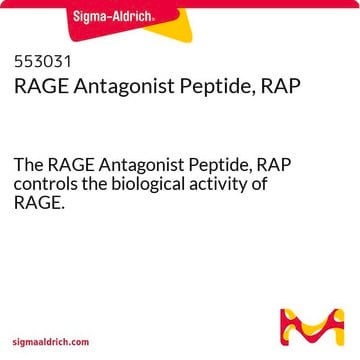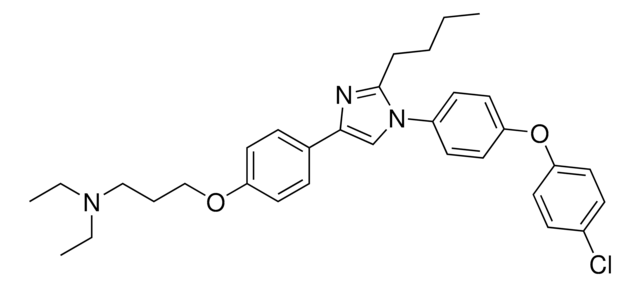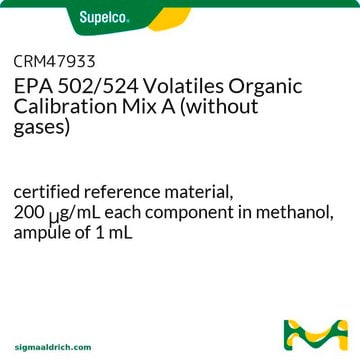553030
FPS-ZM1
≥98% (HPLC), semisolid,viscous liquid, RAGE antagonist, Calbiochem®
Sinonimo/i:
RAGE Antagonist, FPS-ZM1, Receptor for AGE Antagonist, FPS-ZM1, N-Benzyl-4-chloro-N-cyclohexylbenzamide
About This Item
Prodotti consigliati
Nome del prodotto
RAGE Antagonist, FPS-ZM1, RAGE Antagonist, FPS-ZM1, is a blood-brain-barrier permeant blocker of RAGE V domain-mediated ligand binding (Ki = 25, 148, & 230 nM, respectively, against Aβ40, HMGB1 & S100B, binding to sRAGE).
Livello qualitativo
Saggio
≥98% (HPLC)
Stato
semisolid
viscous liquid
Produttore/marchio commerciale
Calbiochem®
Condizioni di stoccaggio
OK to freeze
protect from light
Colore
white to off-white
Solubilità
DMSO: 100 mg/mL
Condizioni di spedizione
ambient
Temperatura di conservazione
2-8°C
Stringa SMILE
O=C(C1=CC=C(Cl)C=C1)N(CC2=CC=CC=C2)C3CCCCC3
InChI
1S/C20H22ClNO/c21-18-13-11-17(12-14-18)20(23)22(19-9-5-2-6-10-19)15-16-7-3-1-4-8-16/h1,3-4,7-8,11-14,19H,2,5-6,9-10,15H2
XDFKWGIBQMHSOH-UHFFFAOYSA-N
Descrizione generale
Azioni biochim/fisiol
RAGE
Confezionamento
Attenzione
Ricostituzione
Altre note
Note legali
Codice della classe di stoccaggio
11 - Combustible Solids
Classe di pericolosità dell'acqua (WGK)
WGK 3
Punto d’infiammabilità (°F)
Not applicable
Punto d’infiammabilità (°C)
Not applicable
Certificati d'analisi (COA)
Cerca il Certificati d'analisi (COA) digitando il numero di lotto/batch corrispondente. I numeri di lotto o di batch sono stampati sull'etichetta dei prodotti dopo la parola ‘Lotto’ o ‘Batch’.
Possiedi già questo prodotto?
I documenti relativi ai prodotti acquistati recentemente sono disponibili nell’Archivio dei documenti.
Filtri attivi
Il team dei nostri ricercatori vanta grande esperienza in tutte le aree della ricerca quali Life Science, scienza dei materiali, sintesi chimica, cromatografia, discipline analitiche, ecc..
Contatta l'Assistenza Tecnica.







